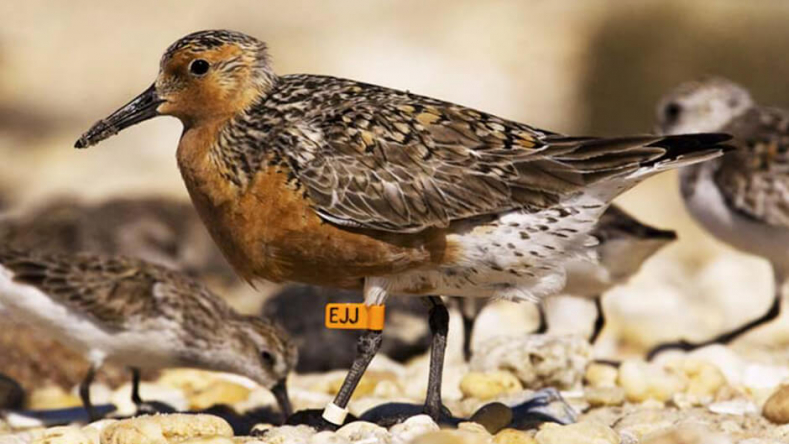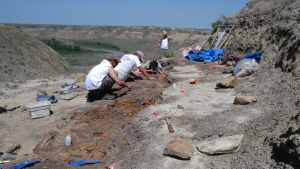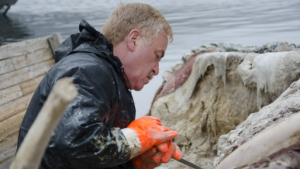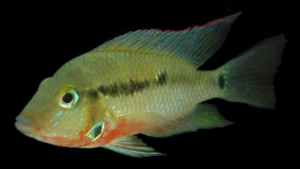Migratory shorebirds are true wonders of the natural world. Each year, they undertake grueling migrations of up to 30,000 km from their wintering grounds in South America to their breeding grounds in the Canadian Arctic, and back again. Along the way, they stop at various staging points to rest and refuel. These highly productive stopover sites are critical to the survival and breeding success of these birds, and there are a number of factors that are reducing their viability, such as global climate change, over-harvesting of food supplies, and disturbance or destruction of habitat. As a result, most populations of migratory shorebirds are in serious decline and their future is tenuous.
One of the most important staging sites along the migration route for shorebirds is Delaware Bay, U.S.A. It is estimated that as much as 80 percent of the North American population of Red Knots (Calidris canutus), as well as numerous Sanderlings (Calidris alba) and Ruddy Turnstones (Arenaria interpres) use the bay during spring migration. What is the main attraction in this heavily-developed area? Horseshoe crabs—their eggs are a principal food source for the birds, which arrive exhausted and with their fat reserves and part of their muscle mass depleted after the long flight from South America. They gorge on these eggs, almost doubling their body mass over a period of approximately three weeks, until they depart en masse at the end of May. If they do not achieve the critical body mass to enable them to continue to the breeding grounds and survive an initial few days of snow cover, their survival and breeding success is jeopardized.
By trapping, banding and gathering data on shorebirds during their stopovers in Delaware Bay, scientists have noticed a decline in the refueling and annual survival of shorebirds, particularly in Red Knots, prior to their departure from the bay. This decline and the dramatic increase in the 1990s in the harvesting of horseshoe crabs are directly correlated. Furthermore, erosion of beaches in Delaware Bay has reduced the number of foraging areas. Unless a viable conservation plan is developed and implemented, Red Knots and other shorebird species face imminent endangerment and risk of extinction.
The ROM’s Allan Baker and Patricia Gonzalez, a conservationist with the Fundación Inalafquen in Argentina, have led the International Shorebird Banding Project for the past 15 years. Collaborating with Luis Benegas in Tierra de Fuego and with an international team of researchers, conservationists, students and volunteers throughout the hemispheric flyway, they are heavily involved not only in collecting data and estimating risks to red knots, but in assisting local conservation organizations to initiate programs to protect resources on which shorebirds depend. Continued monitoring will remain crucial in ensuring the survival of these long distance migrants.





